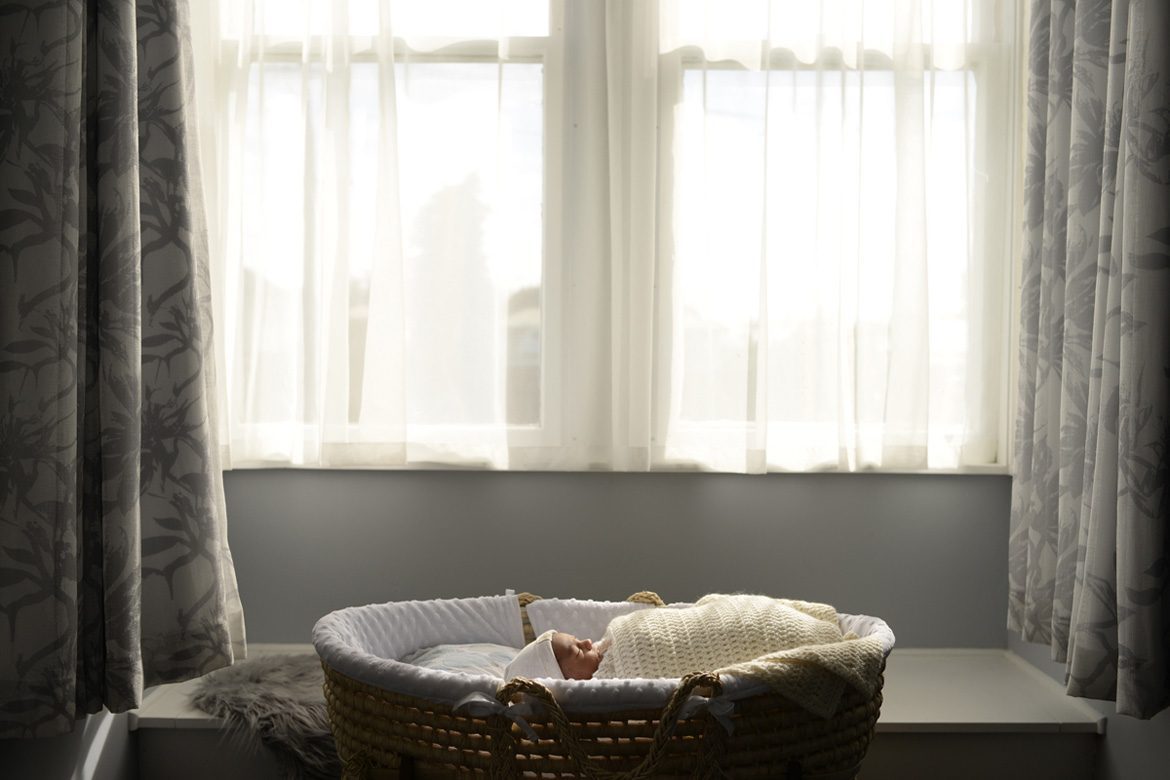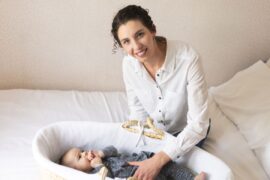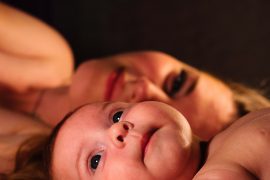By Lauren Porter, BA MSW
INTRODUCTION
Sleep is a basic requirement of human existence. Adequate sleep is required for good health and well-being. Yet sleep needs vary from person to person and change with age, stage and development. In infancy, sleep has distinct patterns and features that differ from adult sleep. ‘Sleeping like a baby’ does not mean long stretches of deep, uninterrupted sleep. Rather, it means shorter sleep cycles, significant amount of time in REM sleep, delayed establishment of a circadian rhythm (Anders & Taylor 1994) and a sleep mechanism that isn’t fully formed until approximately between three (Sadeh & Anders 1993) and five years of age (Segawa 2006).
This paper presents a review of the literature on infant sleep, attachment and the neurological basis of night-time crying. It aims to provide a holistic and scientific foundation for understanding infant sleep.
NIGHT WAKING
While night waking in infancy can be considered problematic by parents who wish to get more uninterrupted rest, the majority of infants wake multiple times in the first months of life and require parental response (Anders, Halpern & Hua 1992). By eight months of age, somewhere between 60-70% of babies appear to be able to fall back asleep upon waking without parental assistance, and this process is known as ‘self soothing’ (Anders 1994). However, babies who do attain this ability to self soothe are not always able to achieve this at every waking. Conversely, even babies who typically ‘signal’ for a parent during the night are usually able to self soothe upon at least one of their night time wakings (Galyor, Goodlin-Jones & Anders 2001; Keener, Zeanah & Anders 1989). Additionally, night waking often increases at approximately one year of age, even for children previously sleeping for long periods during the night (Richman 1981; Seymour et al 1989; Van Tassel 1985). This behaviour is thought to be due to developmentally appropriate responses to separation that are common to this age group (Anders & Eiben 1997). These observations highlight the indisputable fact that night waking is the norm for babies.
Night waking in infancy is not a bad thing since it appears to serve several protective, reparative and attachment functions, particularly from the point of view of survival, optimal development and emotional connection. For example, infants enter REM sleep first, have shorter sleep cycles and spend much greater amounts of time in light/REM sleep, and hence receive greater brain stimulation (Nakao 2006; Roffwarg, Muzio & Dement 1966), more access to breast milk and maternal presence (McKenna et al 1997), and reduce their risk of SIDS by spending less time in deep sleep (Fleming et al 1996). For example, at 3 months of age, the average length of a sleep cycle is 50 minutes, whereas an average adult cycle is roughly 90 minutes (Middlemiss 2004). REM sleep also has important functions for emotional development. During REM sleep, emotional centres of the brain are highly activated, suggesting that REM sleep may be integral to the process of developing psychobiological attachment (McNamara, Dowdall & Auerbach 2002).
SLEEP RESEARCH
When evaluating and understanding infant sleep data and patterns, careful consideration must be given to the conditions, assumptions and criteria surrounding the research itself. McKenna (2001) discusses how much of the data in the sleep literature has been based on the paradigm of solitary-sleeping, artificially-fed infants. For example, when electrophysiological technology first became widely available to quantify infant sleep, breastfeeding initiation rates in the US were at 9%. Breastfeeding rates have improved since then, and we now know that the majority of babies sleep, at least sometimes, in the presence of a caregiver, yet the paradigm for what is ‘normal’ infant sleep was largely established during that foundational period. As a result, sleep ‘problems’ are often described as any patterns that deviate from this suboptimal standard. Hence, in order to create ‘normal’ and ‘healthy’ babies, as prescribed by a now-outdated standard, modern families are pressured to recreate the conditions prevalent when the research was conducted. Such conditions include feeding babies artificial baby milk, putting babies in isolated sleeping environments and extinguishing night waking.











